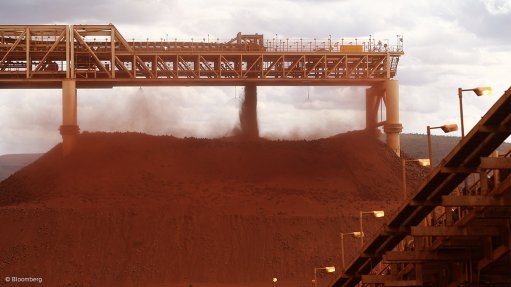
Photo by: Bloomberg
PERTH (miningweekly.com) – The board of iron-ore major Fortescue Metals has approved the $1.27-billion Eliwana mine and rail project, in the Pilbara.
The project will entail a new 30-million-tonne-a-year dry ore processing facility and infrastructure, as well as a 143 km rail line.
Production is expected to start in December 2020, and the mine will introduce a 60% iron-grade product into Fortescue’s portfolio by the second half of 2019.
“Development of the Eliwana project will maintain Fortescue’s low cost status, providing us with greater flexibility to capitalise on market dynamics while maintaining a minimum 170-million-tonne-a-year production rate over 20 years,” Fortescue CEO Elizabeth Gaines said on Monday.
“This project allows us to commence the supply of Fortescue Premium product to the market from existing operations in the second half of 2019, with volumes increased as Eliwana ramps up to full production.”
The project will be financed from operating cashflows, and is expected to produce at a capital intensity of some $42/t. Fortescue is expected to spend some $165-million on the project in 2019, a further $760-million in 2020, and $350-million in 2021, on the project.
Gaines said that the approvals process for the operation was now under way for two public environmental reviews and a mining proposal.
“Fortescue has now shipped over one-billion tonnes of iron-ore in just ten years, generating strong returns from our position at the lowest end of the global cost curve.
“This project is important to Fortescue and the state of Western Australia, creating up to 1 900 jobs during construction, 500 full time site positions once operational, and the continued flow of benefits to our communities in the state economy.”
Western Australian Premier Mark McGowan has welcomed Fortescue’s decision, saying the investment decision highlighted the capacity of the Western Australian economy, and was another sign of the state getting back on track.
“Our economy continues to turn the corner and Western Australian jobs are being created.”